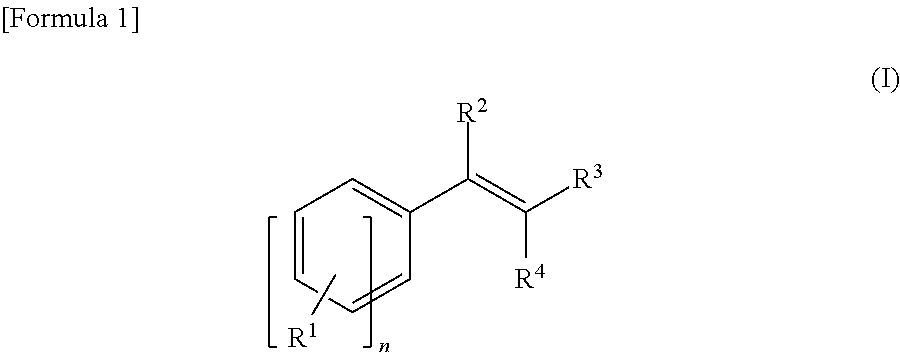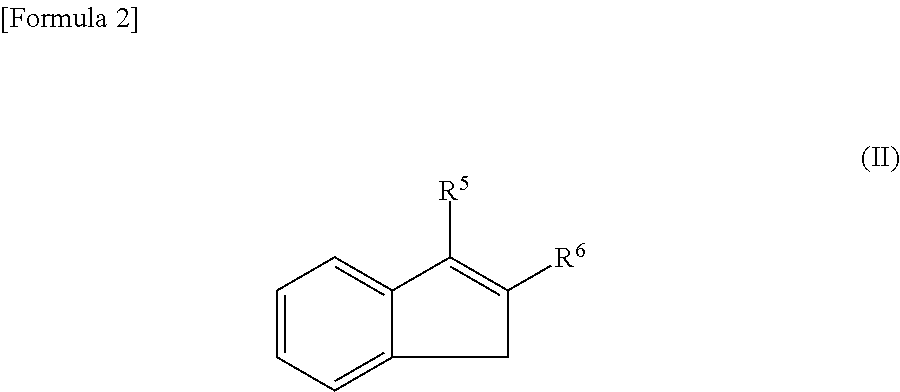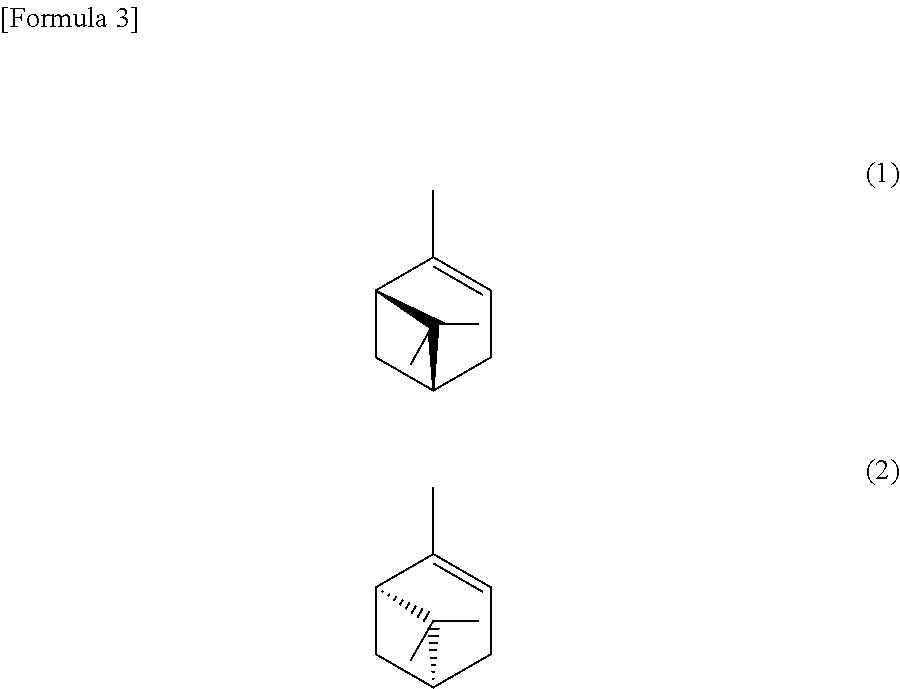Method for manufacturing an epoxy compound and method for epoxidizing a carbon-carbon double bond
- Summary
- Abstract
- Description
- Claims
- Application Information
AI Technical Summary
Benefits of technology
Problems solved by technology
Method used
Image
Examples
example 1
[0113]Sodium tungstate dihydrate (19.8 mg, 0.06 mmol), methyltrioctylammonium hydrogen sulfate (27.9 mg, 0.06 mmol), phenylphosphonic acid (4.7 mg, 0.03 mmol), sodium sulfate (128 mg, 0.90 mmol), and a 30 wt % aqueous hydrogen peroxide solution (340 mg, 3.0 mmol) were introduced into a test tube provided with a magnetic stirrer and stirred for 15 minutes, then α-pinene (409 mg, 3.0 mmol) was added at a temperature of 25° C., and an epoxidizing reaction was carried out under stirring for 12 hours. The organic layer separated from the aqueous layer was analyzed by a gas chromatograph-mass spectrometer (hereinafter referred to as a “GC-MS”), showing that the degree of conversion of α-pinene was 92% and the selectivity for α-pinene oxide was 80% (a yield of 74%).
example 2
[0114]A reaction was carried out in the same manner as in Example 1 except that lithium sulfate (231 mg, 2.1 mmol) was added in place of sodium sulfate to carry out the reaction. The degree of conversion of α-pinene was 93% and the selectivity for α-pinene oxide was 84% (a yield of 78%).
example 3
[0115]Sodium tungstate dihydrate (80 mg, 0.24 mmol), methyltrioctylammonium chloride (100 mg, 0.24 mmol), a 42.5 wt % aqueous phosphoric acid solution (14 mg, 0.06 mmol), sodium sulfate (520 mg, 3.66 mmol), a 48.5 wt % diluted aqueous sulfuric acid solution (100 mg, 0.49 mmol), and a 35.5 wt % aqueous hydrogen peroxide solution (1.17 g, 12.2 mmol) were introduced into a test tube provided with a magnetic stirrer and stirred for 30 minutes, α-pinene (1.68 g, 12.2 mmol) was added at a temperature of 25° C., and an epoxidizing reaction was carried out under stirring for 12 hours. The organic layer separated from the aqueous layer was analyzed by a GC-MS, confirming that the degree of conversion of α-pinene was 83% and the selectivity for α-pinene oxide was 94% (a yield of 78%).
PUM
 Login to View More
Login to View More Abstract
Description
Claims
Application Information
 Login to View More
Login to View More - R&D
- Intellectual Property
- Life Sciences
- Materials
- Tech Scout
- Unparalleled Data Quality
- Higher Quality Content
- 60% Fewer Hallucinations
Browse by: Latest US Patents, China's latest patents, Technical Efficacy Thesaurus, Application Domain, Technology Topic, Popular Technical Reports.
© 2025 PatSnap. All rights reserved.Legal|Privacy policy|Modern Slavery Act Transparency Statement|Sitemap|About US| Contact US: help@patsnap.com



